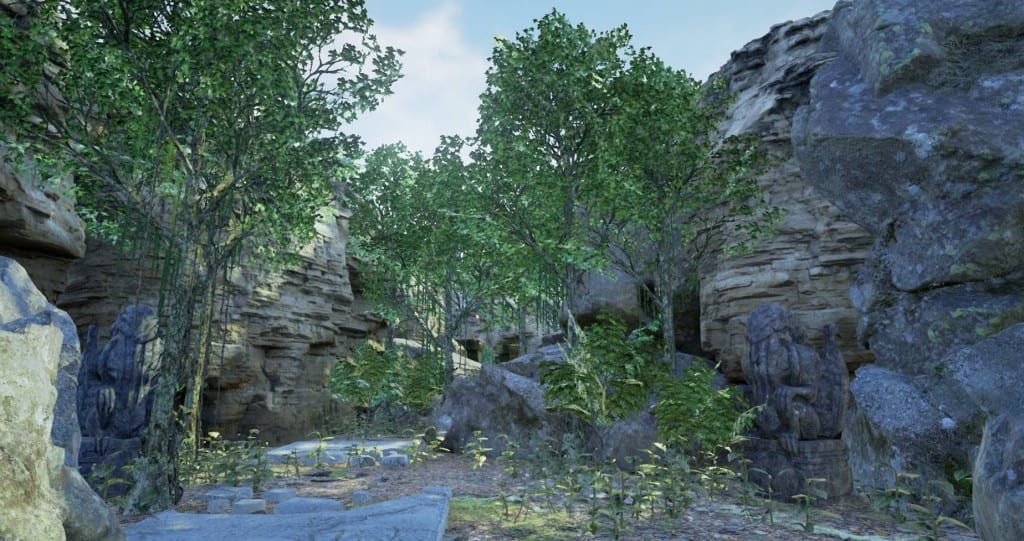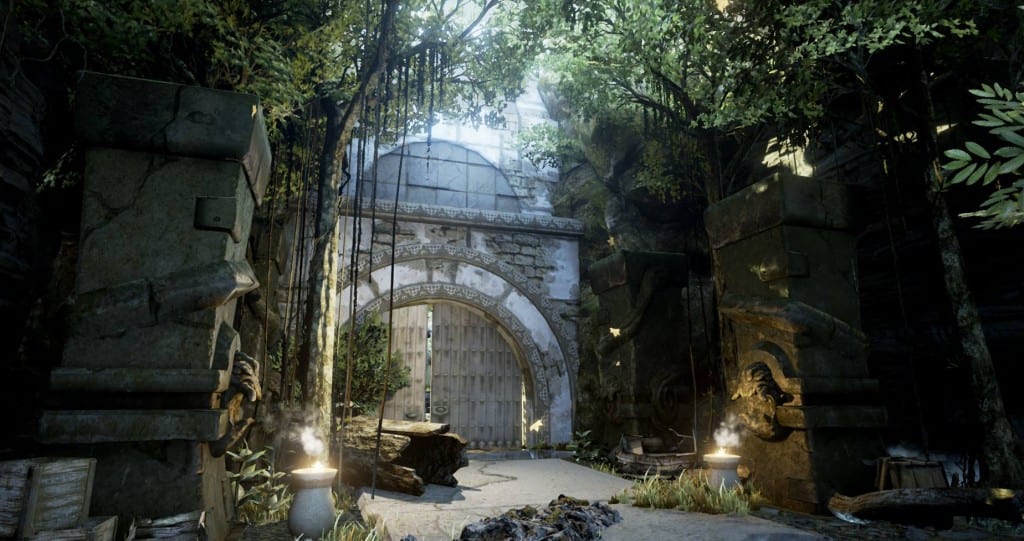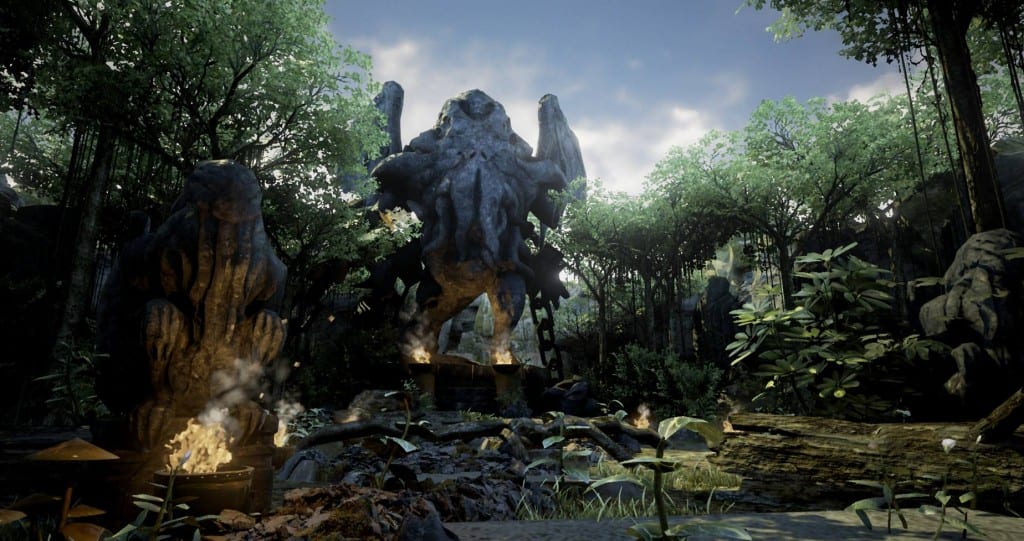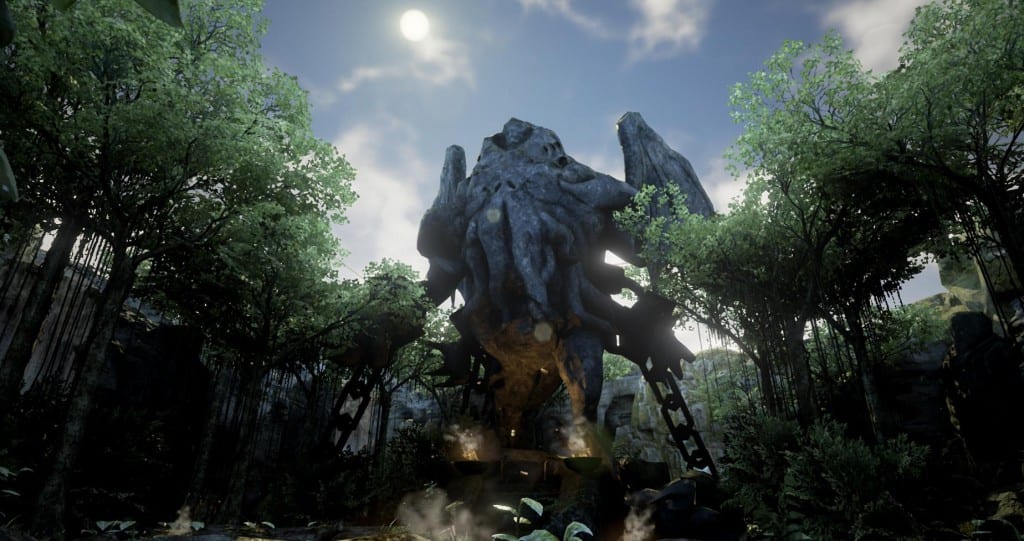-How would you describe the role of a Sound Designer?
“Generally a sound designer creates the soundscape of a piece of media. It’s tough because there’s a lot of different roles in film for example, compared with games. In film you have mixers, sound editors, sound designer, re-recording mixers etc. They have their own little niches, whereas in games it’s largely just sound designers – then maybe dialogue specialists and composers. For me the line is drawn at a sound designer not writing music – although that’s not always the case. It’s a really tough thing to nail down generically, honestly.”
-Does that role differ in any form when applied to a Sound Designer within Game Audio?
“Obviously i’m biased, but I think the role of a sound designer in games is far different to that of film, for example. You may have heard the term ‘technical sound designer’ thrown around – I think my official job title is a technical sound designer. This basically differentiates from film by applying the ‘technical’ term. In film there’s a linear timeline – a start and end, and that’ll never change – no matter how many times you watch it. Film sound designers have the luxury of this fixed medium, and essentially their job is what i’d call ‘pure’ sound design. In games however, the player could do something in 100+ different ways, and the sound must support this. As a result, game sound designers must know pure sound design (as good as film), but also know about middleware, audio tools, game engines and code, and often work in tandem with developers from a whole range of departments (animators, tech designers, level designers, engine coders, network coders, tool programmers.. literally endless list). I’m not going to go as far as to say sound design in games is more complex – because many of the best film sound designers do incredible work, which I personally aspire to. But game sound designers have a far greater learning scope – all of the non-audio aspects that are game specific.”
These first two answers that Barney have given shows the general understanding of Sound Designers both in the general sense, as well as the specified job role within the video games industry. I think the interesting thing about Sound Designers within this industry is the wide range of technical skill involved.
The company ‘Valve’ (Creators of Steam, Half-Life, Portal etc) have recently released their ‘Employee Handbook’ out to the public. Valve view all of their employees to follow a ‘T-Shaped Model’.
That is, people who are both generalists (highly skilled at a broad set of valuable things—the top of the T) and also experts (among the best in their field within a narrow discipline—the vertical leg of the T).
Barney explains in his Podcast, Soundbyte, that he views Technical Sound Designers as this T-Shaped Model. At the top of the ‘T’, we have games developers who understand the games engines basic functions, middleware, coding, audio tools etc. But their specialised field is the Sound Design, which would be seen as the “vertical leg of the T”.
-As a Junior, can you describe your standard workflow on a daily basis?
“It really varies day to day. It depends on what I’m working on, too. Each member of the team ‘owns’ a specific area of the game or the audio, and works on their own, or on a team, to maintain that area. I mainly ‘own’ ambience and environment sounds, which takes up a considerable amount of time. I also work with one of the senior sound designers on ship and FPS weapons.
If i’m working on a specific level, I’ll typically know what I want to do and how I want to do it. We do extensive planning and preparation (where possible) before creating ambience for a level. I like to create an overview, find some reference stuff that I like, possibly do some mock-ups of what I want it to sound like, then i’ll work with a producer to divide up the work, take on what I want to and hand aspects off to others who have specific specialisms within environmental sound. Then i’ll dive into the level and start working – we have to use a markup system currently to define sound propagation and occlusion etc, which is a bit time consuming. After I’ve done that I’ll start creating assets in reaper, thinking about how I want certain rooms and certain spaces to sound. Then I’ll move into wwise, and set up playback systems for my designed sounds. Finally, I’ll work in Cry and drop sounds where I want them – we use a super 3D point source system to essentially ‘paint’ a space with sound. After that i’ll jump into the client and test my sounds from the player perspective, check how stuff is playing back etc. and then i’ll repeat the process as needed. That’s what my workflow might look like if i’m working on ambience – I could be doing weapons, or UI, or props, or ships, or all kinds of stuff.”
It’s interesting to see what the role of a Junior Sound Designer would take on within the industry. From what Barney has said here, there’s a clear range of software that is introduced to his daily life, however there is a lot of creative freedom as he “dives in”. I’ve spoken to various people who are currently in game audio, and there is a huge amount of support from colleagues and others around them. In Barney’s case, he works with a producers to help him divide the work and gives him a manageable chunk to begin work on.
-What sort of work do you typically expect from a project?
“This is a kinda broad question – it depends what you define as a ‘project’. If i’m working on a level for example, I might expect to work with level and game designers, environment artists, and with the rest of the audio team. From the entire game on the whole, I might work on a little bit (or a lot) of everything. That’s one of the great things about being a junior – you can often jump on many different aspects of the game to work on.”
Thankfully, Barney has seen the question as being broad and has given a well rounded general answer for this. Again highlighting the role of a Junior.
–From a company such as Cloud Imperium/Foundry 42 what are the roles above you?
“This again is an interesting one – I think this is maybe a tad different in my company to most. Technically, above me is my line manager – the audio director – and the company director. That’s pretty much it. We’re really a very horizontally based workforce, meaning it’s not really set up for anyone to ‘pull rank’ as such. That said, I am a ‘junior’, and there are mid-level sound designers, and senior sound designers. This essentially defines experience – not level of ability. Our primary senior sound designer has been working in game sound since before I was born, and he’s pretty damn good at what he does. That said, if we disagree on a sound, it doesn’t necessarily mean either of us are right or wrong – it might just be the wrong sound, if that makes sense, or any number of things really. Although the seniors are far more experienced than I, it doesn’t negate the skills and expertise I might bring to the project. I think, if anything, it just defines that I’m still learning (although, we’re all still learning really – even those with 20+ years experience).
So the audio team is laid out like this – 1 junior sound designer (me), 3 mid-level sound designers, 3 senior sound designers, 1 audio director, 2 dialogue specialists, 2 composers, 4 audio programmers and 1 audio producer.”
Barney has answered this question company specific, however a lot of companies I know work fairly similar. Suddi Raval said a similar thing for TT Games, with the team being separated. I like how Barney has described it as a “horizontal based workforce”. For the most part, this shows the supportive nature of the video games industry and more importantly individuals involved in game audio. It is a very honest opinion, however it’s a positive reinforcement for someone looking to gain entry into the industry.
-And finally, are there any key skills that you believe are essential for someone looking to gain entry into the games industry as a Sound Designer?
“You can, to some degree, learn pretty much everything you need to land a junior sound designer position. The big one is sound design, obviously – personally I think sound design is as much about taste as it is about skill, and taste is something you develop over years and years. Learn the basics of sound design by re-creating. And it’s fine to practice sound design in a linear environment. Pick a clip from a game, or a film, strip the original audio and re-design it yourself. Once you’re as happy as you can be with it, send it to someone who’s opinion you respect, and get feedback from them. Take onboard what they say, and take the lessons onto the next clip you re-design. and repeat. You’ll learn so much every time you do that. Do it regularly too, and you’ll see yourself getting better!
You also need to know middleware – commercial audio tools – both in principle and in practice. The big ones are FMOD and Wwise – most AAA studios use wwise, and generally FMOD is used by indies (although there are exceptions to this). These are essentially audio tools that are built to enable interactive audio playback in a game development environment. Many companies have their own custom tools, which are specifically written to their needs and specifications. Generally understanding how interactive audio works in games is a good base, but knowing a specific middleware is a big plus.
Furthermore, it’s really important to know a game engine, or again, generally how a game engine functions. I’d never touched CryEngine before my job, but I picked it up quickly because I knew Unreal Engine pretty well. It’s also really important to have at least a general overview of the different departments that use the engine too – art, code, animation, etc. I personally think understanding the other aspects of game development helps to make you a far better sound designer.
There’s a lot of stuff that’ll make you stand out too. For example, know a bit about field recording is a plus. Also knowing housekeeping code stuff as python or lua is a big plus. Knowing software development tools like Jira or Perforce is super helpful too, as well as (at least being able to read) data management code like XML. “
Barney’s response to this question is personal to himself, however also covers a wider spectrum of the potential areas you’d need to address when approaching the industry. Again I believe what Barney is talking about in this area can be related back to the ‘T-Shaped Model’ presented in the Valve employee handbook. It seems as it’s a bit about knowing a wide range of stuff to begin with, and overtime specialising in one certain area. This has been supported by Suddi Raval, who when asked the same question, said it’s important to show a wide range of knowledge which can be the foundations to build upon.



